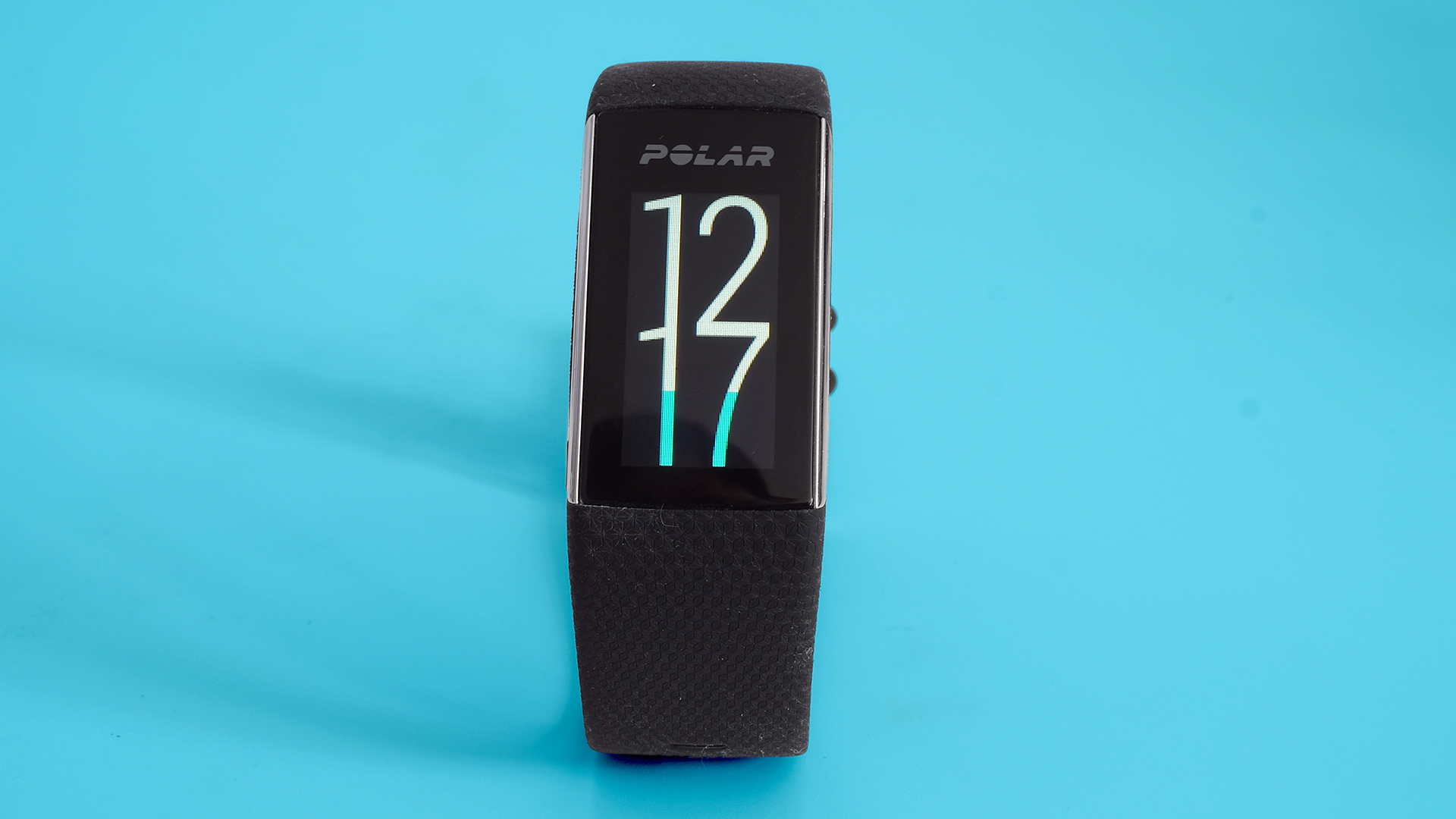Why you can trust TechRadar
Features and interface
- Simple interface
- You need to dig down for step counts
- Four watch faces
The Polar A370 has a simple interface you navigate using the touchscreen. Annoyingly, there’s no touchscreen gesture that can bring the band out of sleep mode and turn the screen on.
To do this you have to either use a wrist flick gesture or press the button on the side. Using the wrist maneuver is slow and a little unreliable, and the side button is a bit too stiff for an easy press. Unless you hold the other side of the band, it’ll be pushed across your wrist: a little usability fail.
All of this matters because the Polar A370 does not have an always-on screen, so 98% of the time, the screen will be completely black, displaying nothing.
It also makes poor use of its watch faces. There are four customizable faces, including digital and analog views. However, they only display the time. Almost all fitness bands with a screen let you see your daily steps and the time on one screen for an easy update on how you're doing fitness-wise.
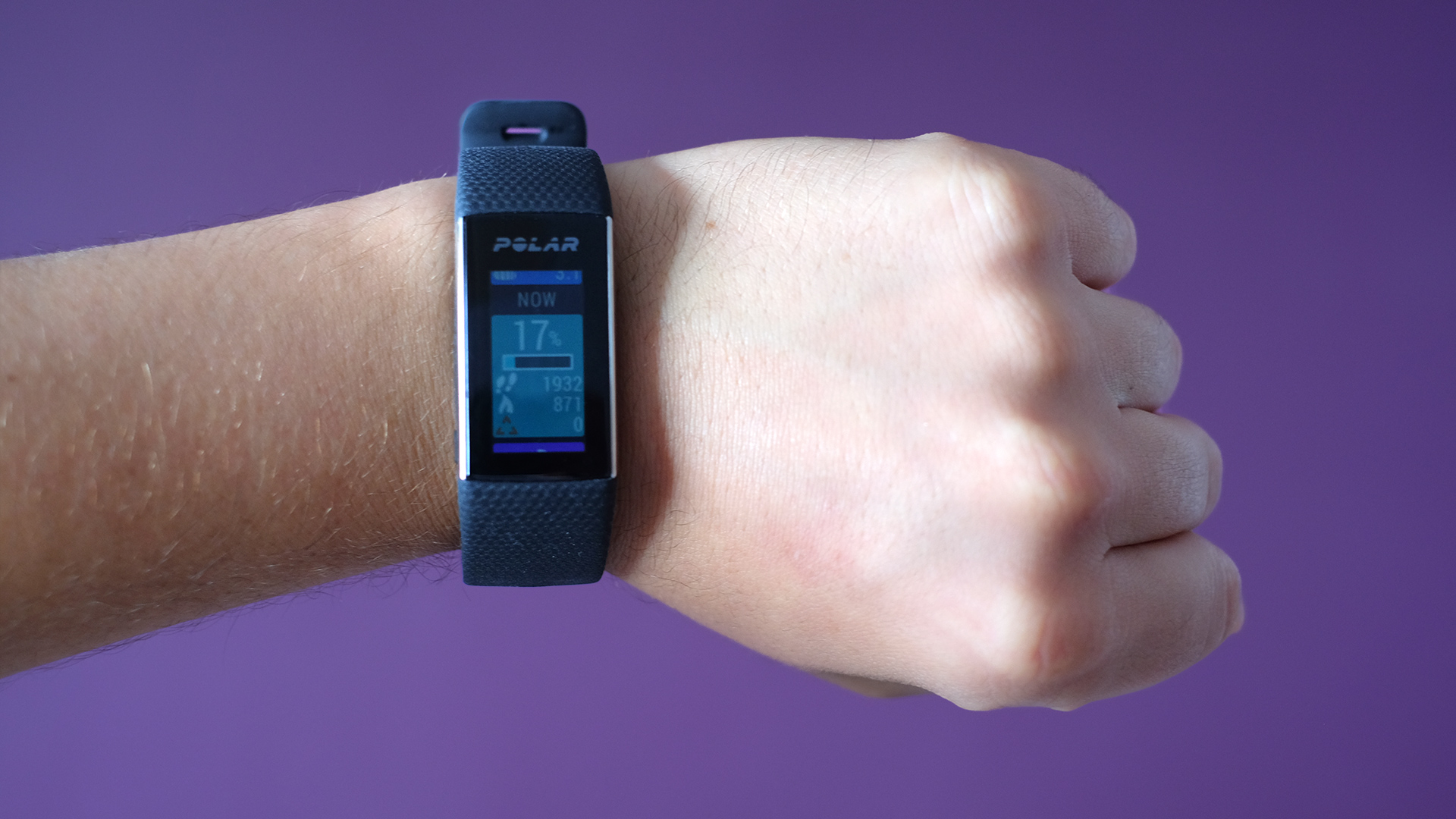
The Polar A370 makes you flick down to the My Day option and tap on it to see how many steps you’ve taken. As small a gesture as this is, it’s something you’ll need to do several times a day if you actually want to actively use a fitness tracker. It gets old.
Flick up and down from the watch face and, other than the time, you’ll see screens for heart rate scanning, the Settings menu and Training. The latter is what you’ll pick whenever you want to track a specific activity.
The Polar A370 interface is simple and pretty clean, but the way it doesn’t give you a ‘home screen’ that tells you most of the information you need to see day-to-day is a big misstep.
Fitness tracking
- GPS-via-phone or on-watch accelerometer tracking
- Wide range of activity categories
- Phone notifications
The Polar A370 has a curious mix of fitness features, adding parts often not seen in basic fitness bands but leaving out a couple of core parts common to most.
Neat extras include the ability to piggyback off a phone’s GPS connection to fully track walks and runs, all-day heart rate scanning and the ability to use the heart rate sensor as an ANT+ sensor with other apps and hardware.
The first, GPS tracking via phone, is the most important. As long as you have a phone with you, you’ll get readings somewhat similar to those of a GPS runner’s watch.
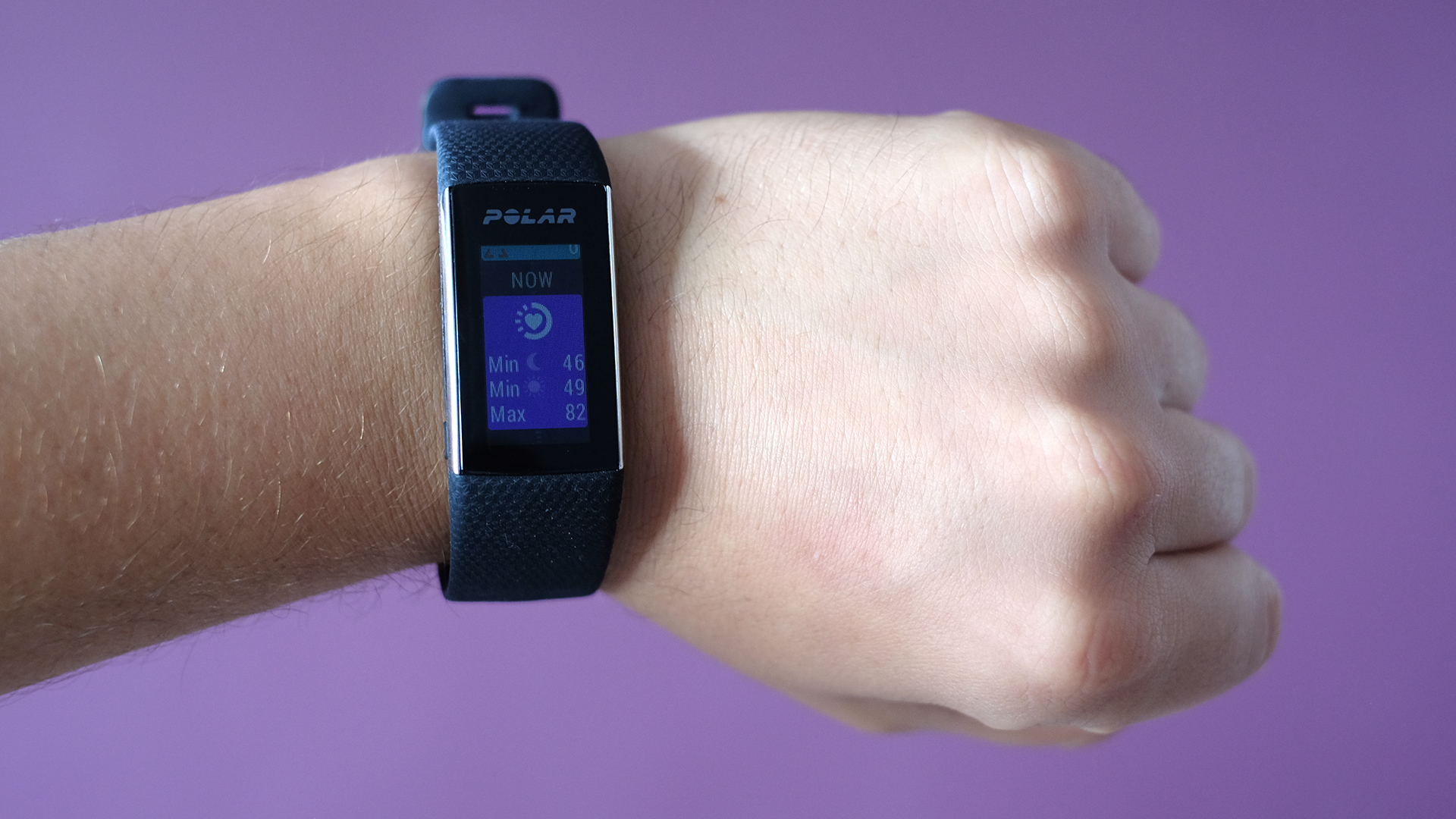
However, while we’ve found the final readings to be reasonably accurate, the Polar A370 continually seems to send vibrate messages telling you it has lost and found GPS signal, or lost connection to your phone. This is without moving the phone, or with any obvious phone battery-saving measures to blame.
This will likely vary between phone models, but shows how the connection is managed is not that smart.
When running on a treadmill, there’s a dedicated mode that switches to using accelerometer data instead of GPS. As with the other modes the visual focus while you run and look at the watch is very much on heart rate readings rather than pace/distance, though.
There are extra modes for things like weight lifting and group exercise, and even the likes of Latin dancing, horse riding and rugby, and you can even create your own ones.
However, with no rep counting, this is mostly to let you organize your sessions in the app rather than actually adding any meaningful data.
Other than offering a specific label to mark them out in the exercise history, the main thing they do is to switch GPS on or off.
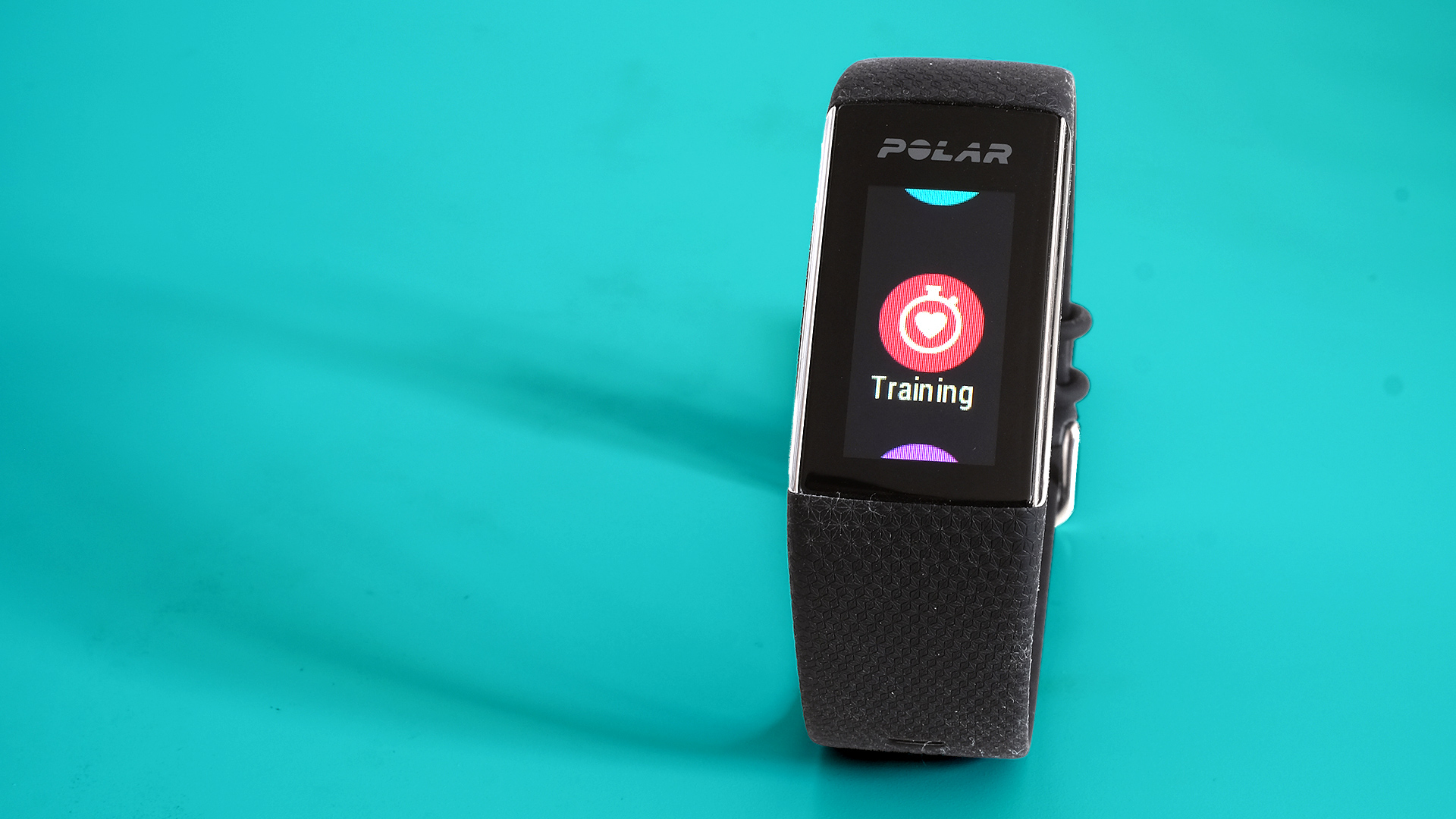
What depth there is here is all about GPS tracking via a phone. There’s no step-counting altimeter, for example. In this sense, the Polar A370 is oddly close to a GPS-free smartwatch, which can use apps to connect to your phone’s GPS.
The Polar A370 has phone notifications too, another taste of smartwatch functionality. You need to enable these in the band’s app, but you’ll then get virtually every heads-up your phone can provide including WhatsApp, and even when Spotify changes tracks.
Some pruning of these notifications is advised, and once again you do this in the phone app, where you can block notifications you don’t want to see.
These updates on your wrist are rather thin as well. While you can see the first few words of messages and emails, there’s no way to dig deeper and see the rest of the text on the band. We don’t expect, or want, to read full emails on a fitness band, but it would be nice to be able to read a full WhatsApp message.
Performance and app
- Fair HR tracking
- Patchy GPS phone connection
- App is clean but not particularly motivating
Boot up the Polar app and you’ll see a big pie chart representing your day, split up into chunks of exercise, sleep and inactivity. Some might find it weird that there's no step count and distance travelled right in front of you, but the overall effect is one to give you a more holistic view of your day rather than just some numbers.
There are ‘points of interest’ bubbles peppered throughout the day, which you can tap for more info. These might be for activities, show sleep stats or tell you your lowest resting heart rate reading of the day. The A370 monitors your heart at regular intervals all day long, which is helpful when trying to see if you're getting fitter.
To get a look at some more familiar stats you just have to scroll down. Here you’ll see your steps, distance, calories and time spent active. The Polar A370 also doles out inactivity stamps, like black marks, which are shown here too.
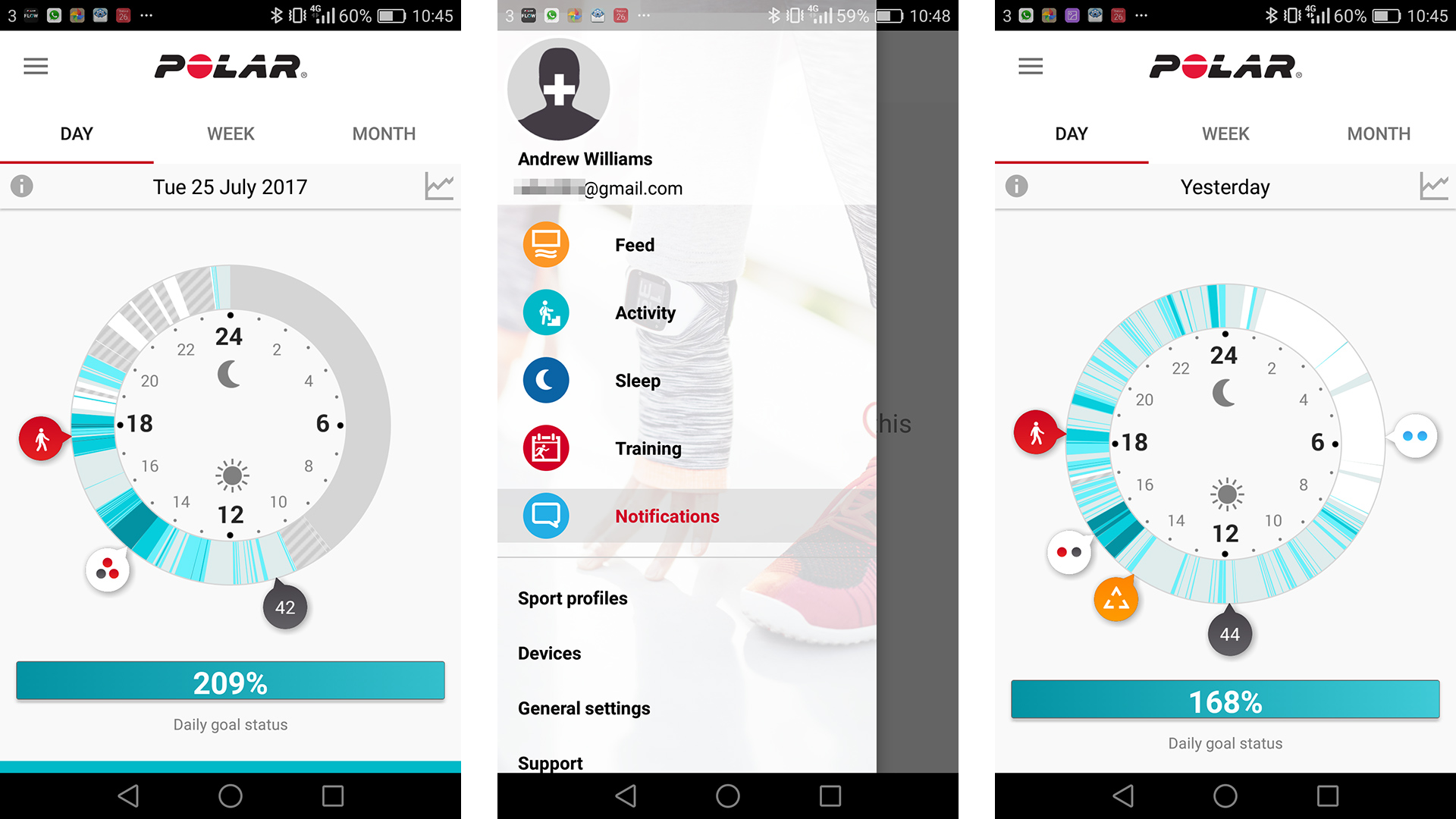
If you want a bit more detail you have to open up the main menu, which has links for the sleep and training sections.
Sleep tracking offers the standard graphic splitting up the hours into sleep and motion, spewing out a sleep time figure and a judgement on how fragmented your sleep is. It's stuff to be expected, but it will give you a good insight into how you're sleeping and being able to give feedback each morning is nice, as it makes you feel like you're having more of a part to play in improving sleep.
All your tracked activities end up in the Training section, labelled with whatever mode you selected. The info for each is laid out in a clean and matter-of-fact manner.
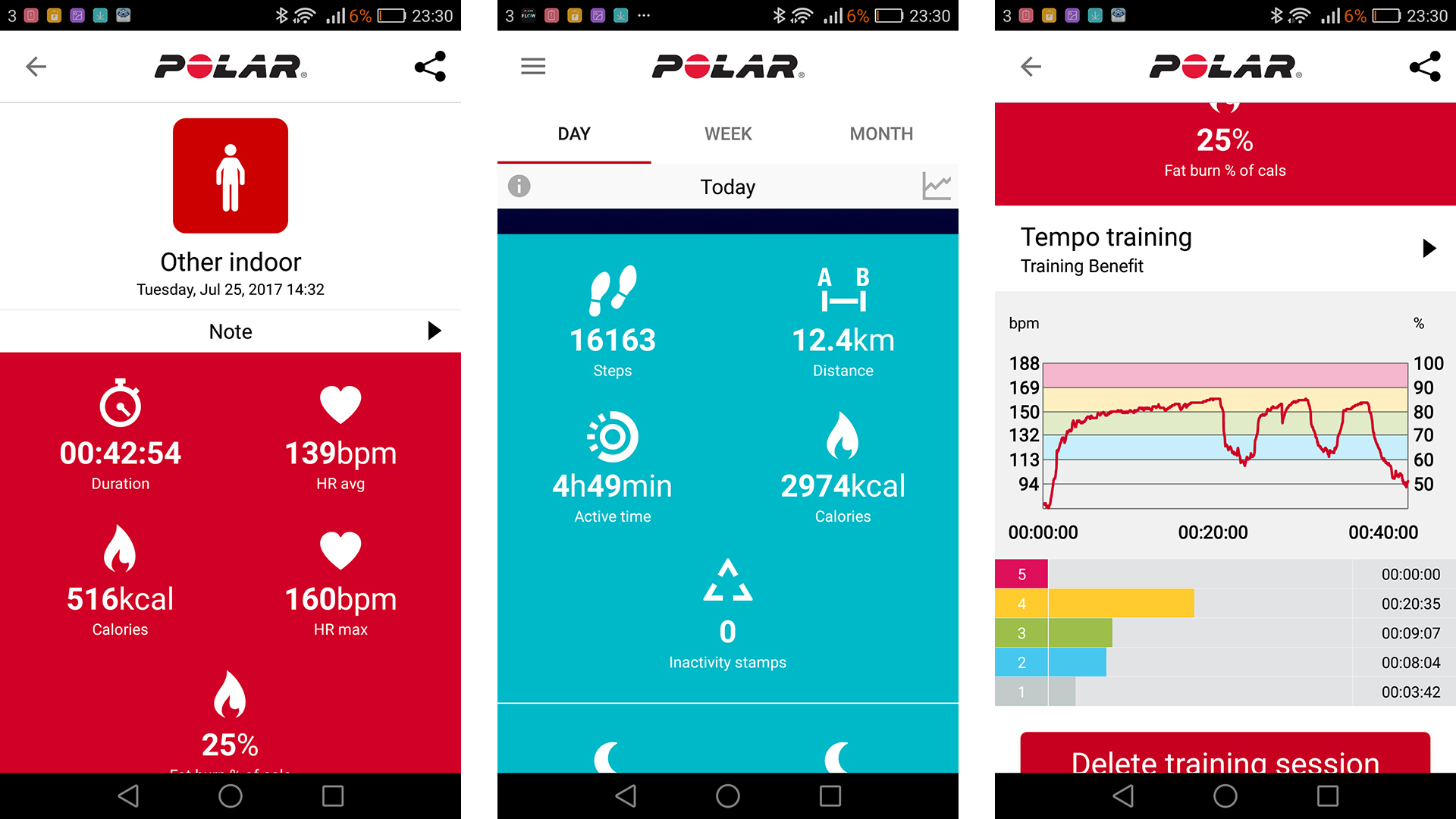
There’s a bunch of bold stats at the top, like average heart rate, distance and pace, followed by a heart rate graph and, where applicable, a map showing your route.
Despite all the Polar A370’s nagging about losing GPS signal or connection to the watch, the routes we’ve recorded have actually been reasonable aside from the odd cut corner, presumably caused during a GPS drop-out.
Heart rate accuracy is fair, but we’ve noticed a few problems. The Polar A370 tends to routinely slightly overestimate the heart rate by a few bpm, and struggles with low intensity exercise like slow walking, tending to report a too-high heart rate some of the time.
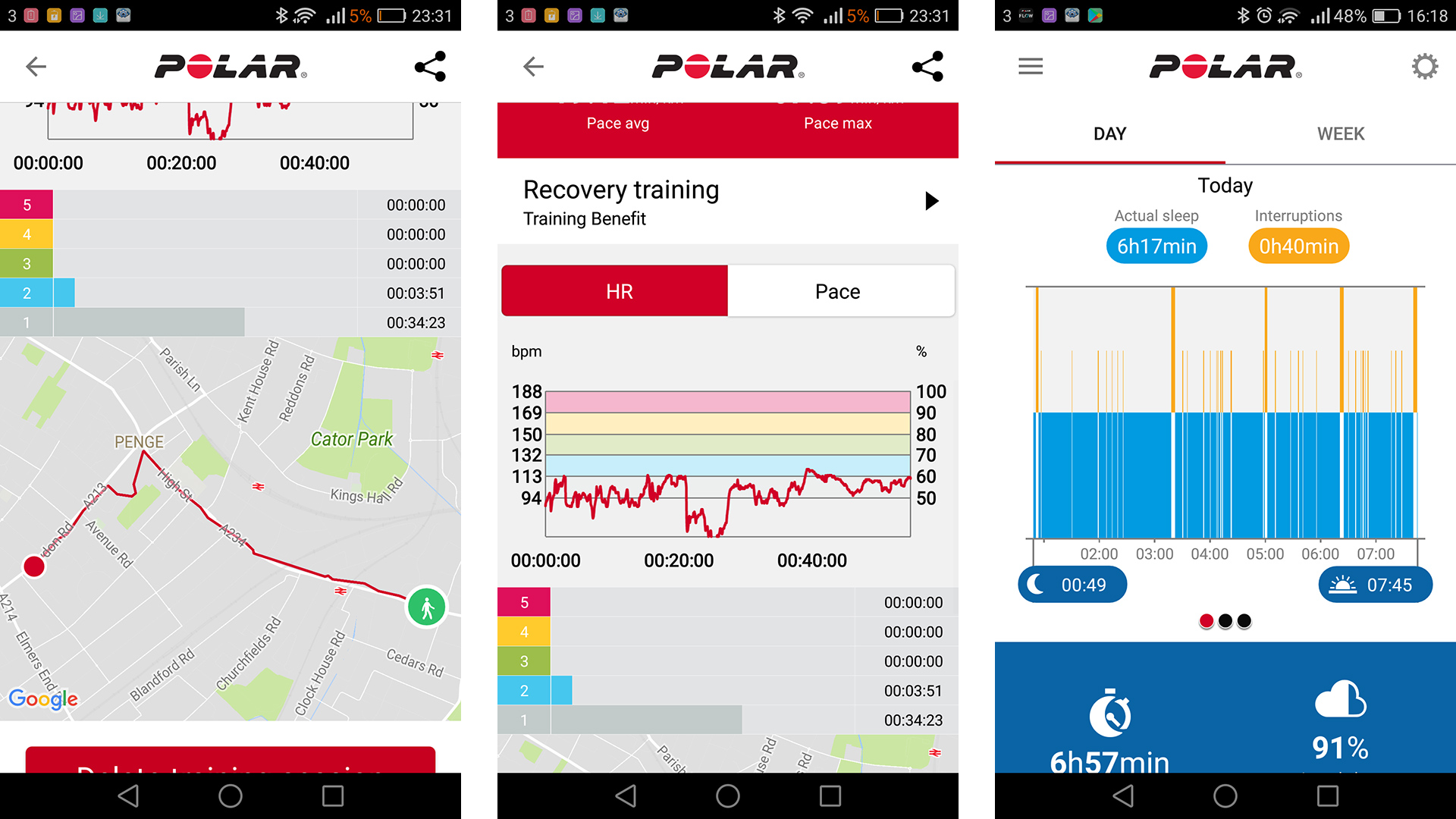
It does a decent job when it really matters, though, during fairly intense exercise.
During a 6km run with a couple of interval-style rests to check if the Polar A370 would respond correctly by showing a decrease in exertion as soon as we dropped the pace, reliability was fairly good, barring one very brief unexpected drop in HR with no dip in exertion.
The Polar A370 is no replacement for a chest strap heart rate sensor, but Polar does seem to have significantly improved heart rate readings since the A360’s launch.
What hasn’t improved is the motivation and fun level of the app. There are no challenges or major social elements beyond sharing some of your stats on social networks. It’s a fine, clean way to look over your stats, but not much more.
This isn’t necessarily a big problem, though, as the Polar A370 app also lets you connect to other services: Strava, MyFitnessPal, TrainingPeaks, Nike+ Run Club and Google Fit. You can also make it sync your activities to your Google Calendar.
Current page: Specs, performance and fitness
Prev Page Introduction and design Next Page Battery life, compatibility and verdictAndrew is a freelance journalist and has been writing and editing for some of the UK's top tech and lifestyle publications including TrustedReviews, Stuff, T3, TechRadar, Lifehacker and others.
